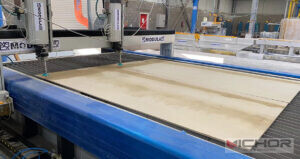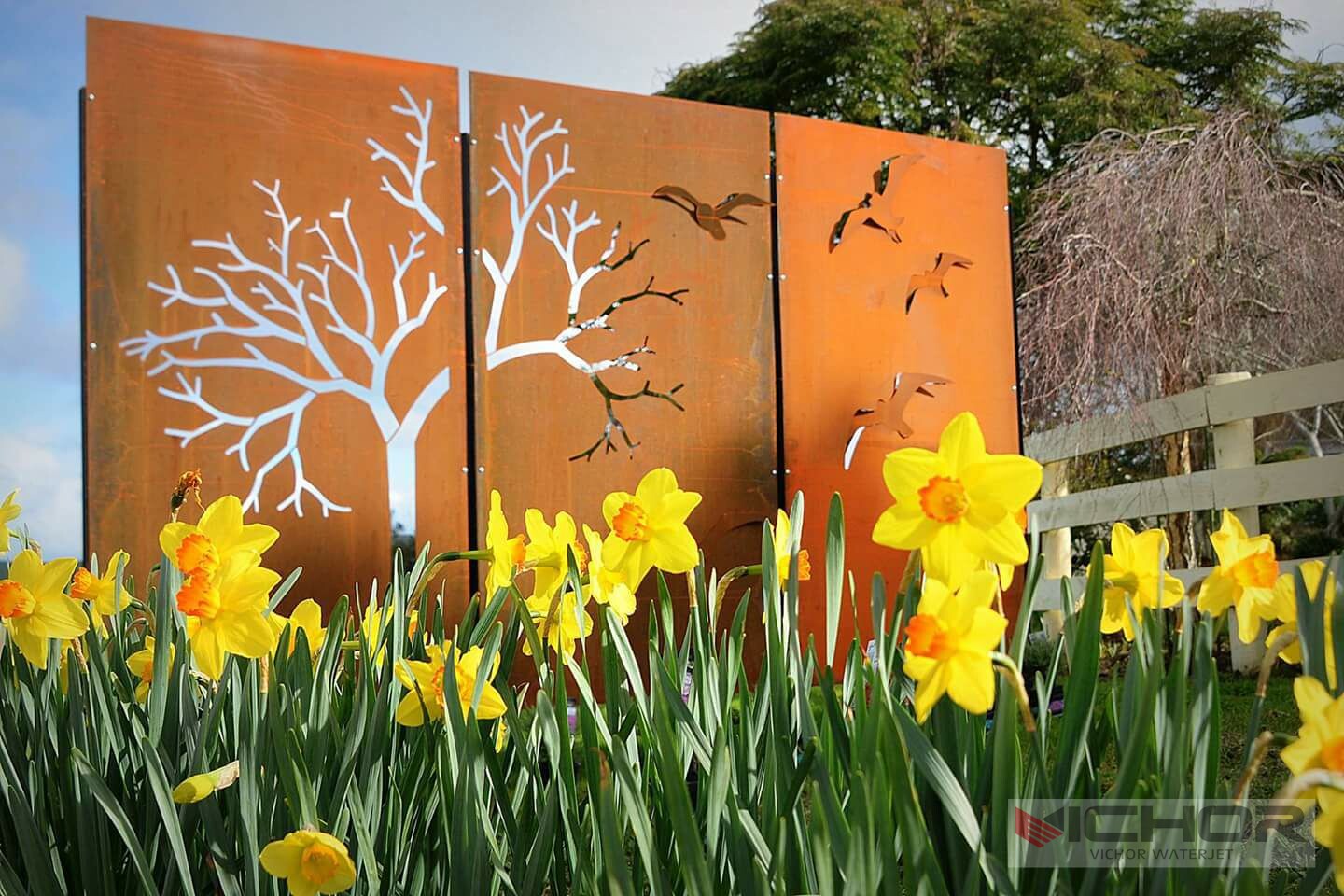
7 Factors That Directly Shape Your Water Jet Cost Per Inch
Have you ever received a quote for water jet cutting and wondered why the price seemed to jump around? You’re not alone. The water jet cost per inch is a critical metric that businesses and individuals rely on when planning projects, from intricate metal artworks to heavy-duty industrial parts. But this number isn’t arbitrary; it’s influenced by a web of variables that can make or break your budget. Understanding what drives the water jet cost per inch can empower you to make smarter decisions, optimize your spending, and achieve better results. In this detailed breakdown, we’ll uncover the key elements that directly affect your expenses, helping you navigate the complexities of this efficient cutting method without any surprises.
The water jet cost per inch typically refers to the price charged for each inch of material cut using a high-pressure water jet system. This cost is rarely a flat rate and is instead calculated based on the total linear inches of cutting path. However, the final figure you see on an invoice is a sum of various factors, each playing a significant role. By delving into these aspects, you’ll gain insights into how to control costs and what to expect when sourcing services. Let’s explore the seven primary factors that determine your water jet cost per inch, ensuring you’re well-prepared for your next project.
Material Type and Its Role in Water Jet Cost Per Inch
The type of material you’re cutting is one of the most significant drivers of the water jet cost per inch. Water jets are versatile and can handle a wide range of materials, but each comes with its own set of challenges and costs. Soft materials like foam, rubber, or plastics are generally easier and quicker to cut, leading to a lower water jet cost per inch. This is because they require less abrasive additive (if any) and put less wear on the machine components. In contrast, hard materials such as steel, titanium, or ceramics demand higher pressure, more abrasive grit, and slower cutting speeds. This increases the overall expense, as abrasives contribute substantially to the operational costs. For instance, cutting through a thick metal plate might involve a higher abrasive consumption rate, which directly elevates the water jet cost per inch. Additionally, exotic materials that are brittle or prone to chipping may require specialized settings, further influencing the price. When planning your project, always consider how your material choice impacts the final water jet cost per inch to avoid budget overruns.
Thickness of the Material: How It Alters Water Jet Cost Per Inch
Material thickness is another crucial factor that can cause the water jet cost per inch to fluctuate. Thinner materials are cut faster, as the jet can pierce through them quickly, reducing the time and energy required. This often results in a lower water jet cost per inch. For example, cutting a 1/4-inch sheet might be significantly cheaper per inch than a 2-inch thick block. Why? Thicker materials require slower cutting speeds to ensure precision and avoid taper (a slight angle in the cut). Slower speeds mean the machine spends more time on each inch, increasing labor, machine usage, and consumable costs. Moreover, thicker sections often need higher pressure settings and more abrasive, which adds to the expense. In some cases, very thick materials might require multiple passes or specialized nozzles, further driving up the water jet cost per inch. It’s essential to provide accurate thickness details when requesting quotes, as even a small increase can lead to a noticeable rise in your overall costs. By understanding this relationship, you can better estimate expenses for projects involving varied material dimensions.
Machine Efficiency and Its Effect on Water Jet Cost Per Inch
The efficiency and capability of the water jet machine itself play a pivotal role in determining the water jet cost per inch. Modern, high-efficiency machines with advanced pumps and controls can operate at higher pressures (e.g., 60,000 psi or more), enabling faster cutting speeds and better precision. This often translates to a lower water jet cost per inch because the job is completed quicker, reducing hourly rates and energy consumption. On the other hand, older or less efficient machines might run at lower pressures, leading to slower cuts and higher costs per inch. Factors like nozzle wear, pump maintenance, and software optimization also impact efficiency. A well-maintained machine with minimal downtime ensures consistent performance, whereas frequent breakdowns can increase operational costs, which are passed on to customers as a higher water jet cost per inch. Additionally, machines equipped with features like 5-axis cutting might offer better results for complex shapes but could come at a premium. When evaluating services, inquire about the equipment used, as investing in a provider with efficient technology can save you money in the long run by optimizing the water jet cost per inch.
Labor and Operational Costs in Calculating Water Jet Cost Per Inch
Labor and operational expenses are often overlooked but are integral to the water jet cost per inch. Skilled operators are needed to program the machine, monitor the cutting process, and perform quality checks, all of which contribute to labor costs. In regions with higher wages, this can elevate the overall water jet cost per inch. Operational costs include electricity, water, and facility overheads. Water jet systems are energy-intensive, especially high-pressure pumps, so power consumption is a significant factor. Additionally, the cost of abrasives (like garnet) and other consumables adds up quickly; for instance, abrasive usage can account for a substantial portion of the water jet cost per inch in hard material cutting. Maintenance schedules and downtime for repairs also play a role—if a facility has high maintenance costs, they might charge more to cover those expenses. Moreover, setup time for complex designs or small batches can increase labor input, raising the water jet cost per inch compared to large, repetitive jobs. By factoring in these human and operational elements, you can see why quotes vary and how choosing a provider with streamlined processes might offer a more competitive water jet cost per inch.
Geographic Location and Its Influence on Water Jet Cost Per Inch
Where you’re located can significantly affect the water jet cost per inch due to regional economic differences. In areas with a high cost of living or dense industrial activity, such as major cities, service providers often charge more to cover elevated rent, utilities, and labor costs. This means the water jet cost per inch might be higher in urban centers compared to rural areas. Additionally, local market competition plays a role; in regions with many water jet services, prices could be more competitive, potentially lowering the water jet cost per inch. Conversely, in areas with few providers, you might face higher rates due to limited options. Shipping and logistics also come into play—if materials need to be transported to and from the facility, those costs might be factored into the overall price, indirectly affecting the water jet cost per inch. Furthermore, environmental regulations vary by location; stricter rules on water usage or waste disposal could increase operational expenses, leading to a higher water jet cost per inch. When sourcing services, consider comparing quotes from different regions to find a balance between cost and convenience, ensuring you get a fair water jet cost per inch.

Complexity of the Cut and Water Jet Cost Per Inch
The complexity of the cutting path is a key determinant of the water jet cost per inch. Simple, straight cuts are quick to program and execute, resulting in a lower water jet cost per inch. However, intricate designs with sharp curves, fine details, or internal cutouts require more time and precision. This increases programming effort, machine movement, and potential for errors, all of which can raise the water jet cost per inch. For example, cutting a complex geometric pattern might involve slower speeds to maintain accuracy, leading to higher charges. Additionally, pierce points—where the jet starts cutting—add to the time and cost; multiple pierces in a design can accumulate, affecting the overall water jet cost per inch. Tolerances and finish requirements also matter; if a project demands high precision or a smooth edge, it might need slower cuts or secondary processes, further increasing expenses. By simplifying designs where possible or discussing complexity with your provider, you can manage the water jet cost per inch more effectively and avoid unnecessary costs for overly detailed work.
Volume and Scale: How Order Size Affects Water Jet Cost Per Inch
The volume of your order directly impacts the water jet cost per inch, often through economies of scale. Large batch orders typically benefit from reduced rates because the fixed costs (like setup and programming) are spread over more units, lowering the average water jet cost per inch. For instance, cutting 100 identical parts might cost less per inch than a single custom piece due to optimized machine time and labor. Conversely, small or one-off jobs usually have a higher water jet cost per inch because they require individual attention and setup. Providers may also offer discounts for recurring orders or long-term contracts, which can make the water jet cost per inch more affordable over time. However, it’s important to note that extremely large orders might face diminishing returns if they strain resources, so discuss volume pricing with your service provider. By planning your projects in bulk or combining orders, you can leverage scale to reduce the water jet cost per inch and achieve better value for your investment.
In summary, the water jet cost per inch is a dynamic figure shaped by material type, thickness, machine efficiency, labor, location, cut complexity, and order volume. By understanding these factors, you can make informed decisions, negotiate better deals, and optimize your projects. Remember, the lowest water jet cost per inch isn’t always the best—quality, reliability, and service matter too. Always request detailed quotes and ask questions to ensure you’re getting a fair price that meets your needs.
Frequently Asked Questions
Q1: What is the average range for water jet cost per inch?
A1: The average water jet cost per inch can vary widely, typically from $0.50 to $3.00 or more, depending on factors like material, thickness, and complexity. For soft materials, it might be on the lower end, while hard, thick metals could push it higher. Always get a custom quote for accurate pricing.
Q2: How does material hardness influence the water jet cost per inch?
A2: Material hardness significantly increases the water jet cost per inch because harder materials require more abrasive, slower cutting speeds, and higher pressure. This leads to greater wear on equipment and higher consumable costs, making the overall expense rise compared to softer materials.
Q3: Can I reduce the water jet cost per inch for complex designs?
A3: Yes, you can reduce the water jet cost per inch for complex designs by simplifying the cutting path where possible, using standard tolerances, and discussing optimization with your provider. Combining multiple parts in a single setup or ordering in larger volumes may also help lower costs.
Q4: Why does geographic location affect the water jet cost per inch?
A4: Geographic location affects the water jet cost per inch due to variations in labor wages, utility costs, rent, and local market competition. Areas with higher living costs or fewer providers tend to have higher rates, while competitive regions might offer more affordable options.
Q5: How does order volume impact the water jet cost per inch?
A5: Order volume reduces the water jet cost per inch through economies of scale. Larger spreads fixed costs like setup and programming over more units, leading to a lower per-inch price. Small batches, however, often have a higher cost due to individualized attention and setup time.
Q6: Is the water jet cost per inch the only fee I should consider?
A6: No, the water jet cost per inch is a key component, but other fees may include setup charges, design programming, material handling, and shipping. Always review the full quote to understand all costs involved in your project.
Q7: How can I get an accurate estimate for my water jet cost per inch?
A7: To get an accurate estimate for your water jet cost per inch, provide detailed information about your material type, thickness, design complexity, and order volume. Contact multiple service providers for quotes and ask about any hidden fees to ensure a comprehensive understanding.
continue reading
Related Posts
- 2056 words10.3 min read
- 1738 words8.7 min read
- 1968 words9.9 min read


